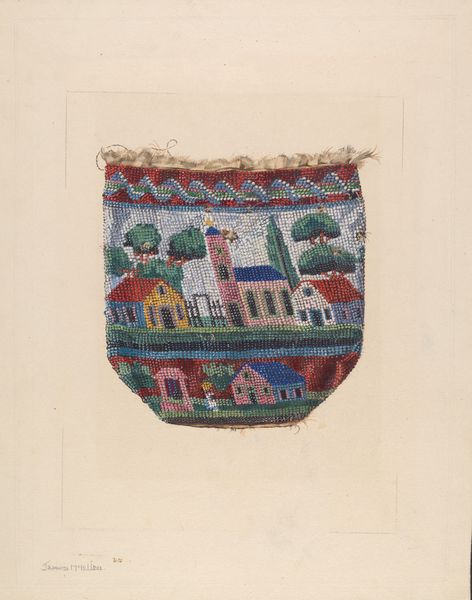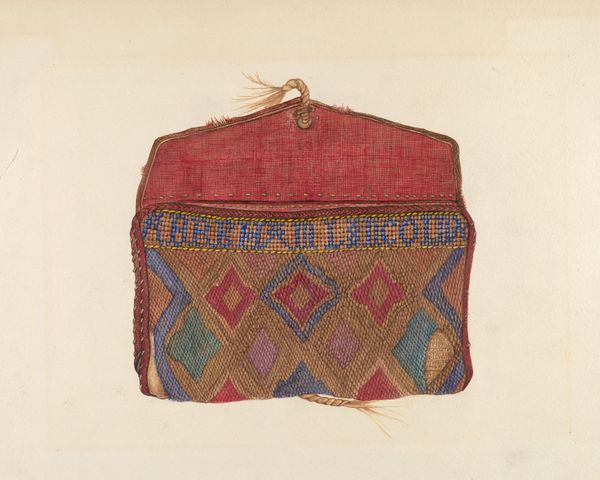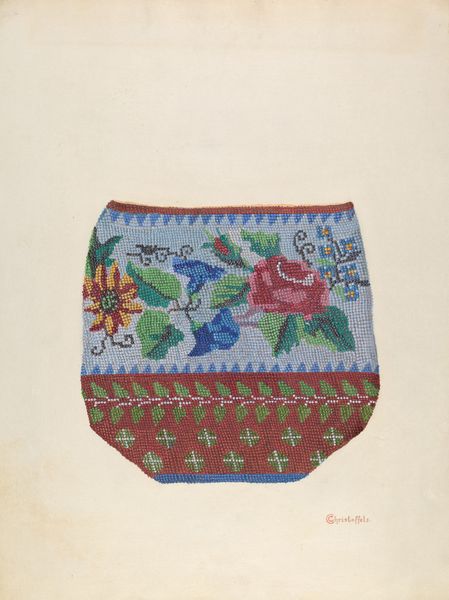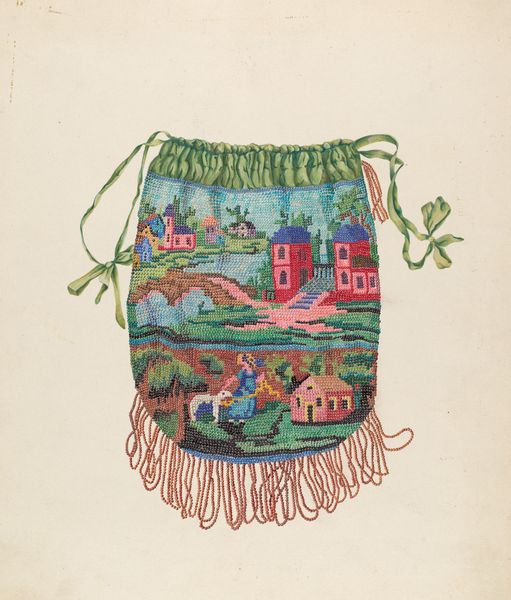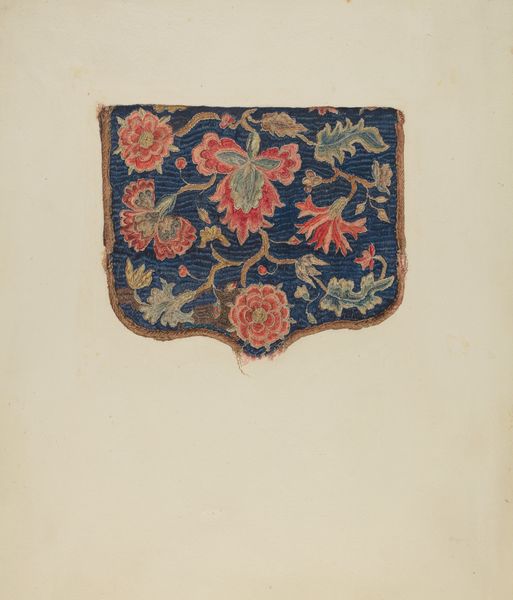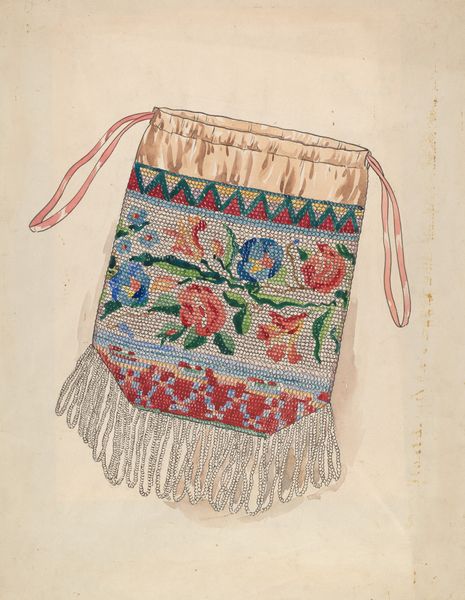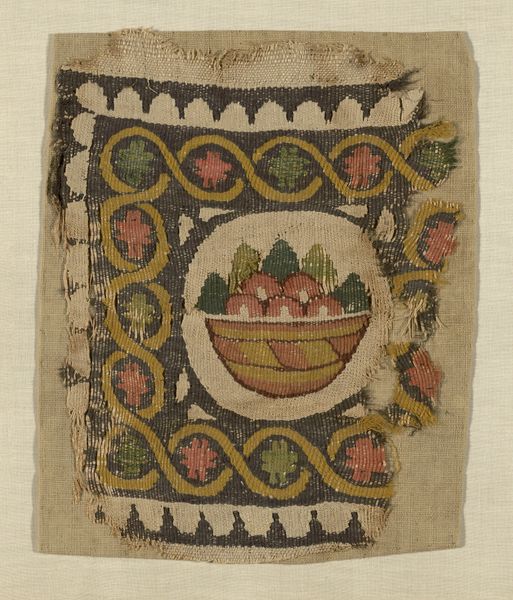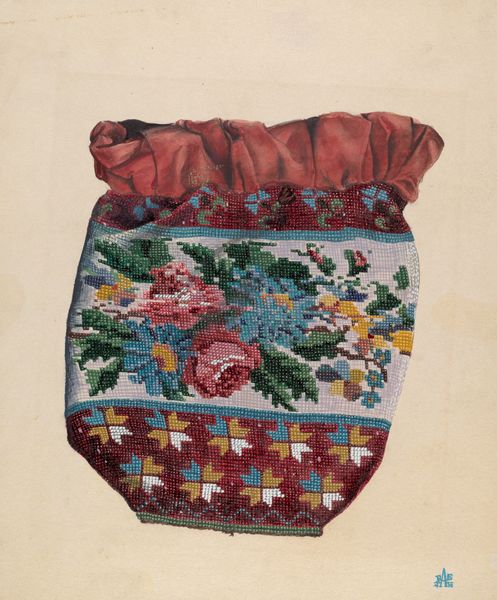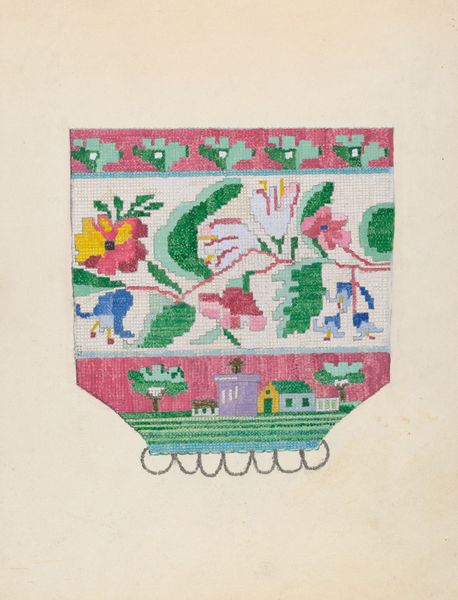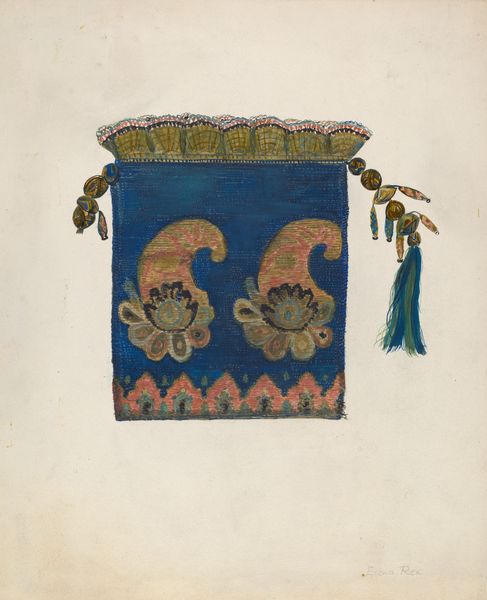
mixed-media, fibre-art, textile
#
mixed-media
#
fibre-art
#
landscape
#
textile
#
genre-painting
#
decorative-art
Dimensions: overall: 49.1 x 36.3 cm (19 5/16 x 14 5/16 in.)
Copyright: National Gallery of Art: CC0 1.0
Curator: Look at this piece, it’s called "Beaded Bag," created around 1937, and crafted with mixed media, including textile and fiber-art. Editor: It has a charmingly folksy quality, doesn’t it? A bit naive in its representation. Almost storybook-like. Curator: Absolutely. Barks employs this naive aesthetic to explore themes of genre-painting and landscape within a decorative-art context. Think about who traditionally engaged with “decorative arts,” and what spaces these items occupied. This informs its cultural value. Editor: It makes me think of the intense, detailed labour. Every single bead painstakingly placed. Who created it, and under what conditions? Was it piecework? The material reality is compelling here, considering how "women's work" has been consistently devalued. Curator: Precisely. It challenges established art hierarchies. Also, what’s represented? A landscape, perhaps idealized. A home, trees... is there commentary embedded about what is lost when communities transition? Editor: The pastoral imagery does strike a certain longing, I think. There’s that bridge; a structure connecting one side to the other. We see that through a material lens, the colour choices - how was this bead chosen over the other, in making up the full spectrum of a countryside? Curator: It definitely urges us to interrogate this piece beyond a mere aesthetic level. Who carried it? What did it contain? Editor: Thinking about functionality opens it up again. Its social life, its journey. And it points towards the question of consumerism of art objects like these. How does the consumption of art play a part in the meaning itself? Curator: That is true. This opens it up to so many additional conversations about ownership and circulation of art, especially craft. Editor: Yes. Examining art through materials lets us talk about hidden hands. We're able to understand labour, function and accessibility. I feel I’ve gotten closer to grasping its layered complexities by seeing it materially. Curator: By bridging the aesthetic with historical and social perspectives, especially surrounding production and cultural function, we can better understand and contextualize these materials, ultimately reaching a far deeper understanding.
Comments
No comments
Be the first to comment and join the conversation on the ultimate creative platform.
